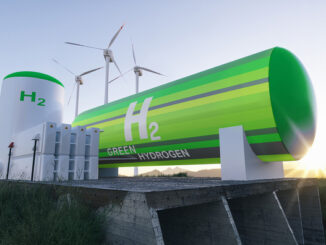
In a recent Substack post, energy analyst Robert Bryce delves into China’s evolving energy strategy under President Xi Jinping, challenging the dominant media narrative that portrays the country as a leader in “clean” renewables like solar and wind. Instead, Bryce argues that the real story is China’s aggressive push into what he dubs “N2N”—a shift emphasizing natural gas and nuclear power alongside its continued reliance on coal.
We highly recommend subscribing to the Robert Bryce Substack, and he has been a regular guest on the Energy News Beat podcast.
This approach, he claims, has driven primary energy growth far more effectively than intermittent sources like solar and wind over the past 15 years.
Bryce’s thesis centers on data showing that natural gas and nuclear production in China have grown 1.4 times faster than solar and wind combined. China’s domestic natural gas sector now produces nearly three times more energy than its entire solar array, while the nation leads the world in nuclear capacity additions. He highlights initiatives like the Shenditake 1 ultra-deep borehole in Xinjiang, which reached 10,910 meters to boost gas production.
On the nuclear front, China is constructing more reactors than any other country, with no close competitors. Bryce contrasts this with overhyped renewables: despite massive installations, solar and wind contribute less to actual energy output due to their lower capacity factors.
The article also underscores China’s coal dominance, noting that the country consumes more coal than the rest of the world combined and is building 227 gigawatts (GW) of new coal-fired capacity.
Once complete, this will expand China’s coal fleet to about 1.4 terawatts (TW)—over seven times the size of the U.S. coal fleet and larger than the entire U.S. electric grid (1.3 TW). In the first half of 2025 alone, China added 212 GW of solar (twice the global total) and 51 GW of wind, bringing solar capacity to 1.1 TW and wind to 573 GW. Yet, Bryce criticizes media outlets like the Financial Times, Bloomberg, and Ember for downplaying hydrocarbons and exaggerating the renewables transition, arguing that this obscures the N2N strategy’s role in meeting China’s energy demands.
To contextualize Bryce’s analysis, let’s examine China’s overall energy mix. In terms of primary energy consumption in 2024, fossil fuels accounted for 86%, with coal alone supplying around 56%, oil 19%, and natural gas 8%. Non-fossil sources made up the remaining 17%, including hydropower, wind, solar, and nuclear.
For electricity generation specifically—a key focus in Bryce’s piece—the 2024/2025 mix shows coal at approximately 55%, hydropower at 14%, solar at 11%, wind at around 11%, nuclear at 5%, and natural gas at 4%.
This represents a slight decline in coal’s share from previous years, driven by clean energy growth, which hit a record 44% of electricity in May 2024 (pushing coal to 53% that month).
Hydropower remains China’s top clean source at 13-14%, while wind and solar combined reached 18% in 2024.
Looking ahead to installations and construction in 2025, China’s energy sector continues its rapid expansion across multiple fronts. For nuclear power, a cornerstone of the N2N shift, China had 68 GW operational as of 2025, with 34 GW under construction and 147 GW proposed.
In April 2025, the State Council approved 10 new reactors across five projects, totaling around 11 GW, at a cost of $27 billion.
Construction started on two additional plants in November 2025, contributing to ambitions of reaching 70 GW operational by the end of the year.
Projects like the Zhaoyuan site plan for six Hualong One reactors, adding 7.2 GW total.
Shandong province alone aims to launch projects adding 5.5 GW in 2025.
For renewables, China added 356 GW of non-hydro capacity in 2024 (277 GW solar, 79 GW wind), with new energy (wind, solar, biomass) reaching 1,450 GW installed by year-end.
Coal additions remain robust, with the aforementioned 227 GW under construction.
Bryce’s piece serves as a reminder that while China’s renewables boom is impressive, its energy security hinges on reliable baseload sources like nuclear and natural gas.
As the world’s largest energy consumer, China’s N2N pivot could reshape global markets, influencing everything from uranium demand to LNG imports. For energy watchers, this underscores the need for balanced reporting beyond green headlines.
Got Questions on investing in oil and gas?
If you would like to advertise on Energy News Beat, we offer ad programs starting at $500 per month, and we use a program that gets around ad blockers. When you go to Energynewsbeat.co on your phone, or even on Brave, our ads are still seen. The traffic ranges from 50K to 210K daily visitors, and 5 to 7K or more pull the RSS feeds daily.








Be the first to comment